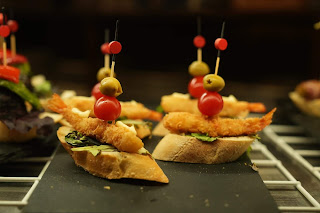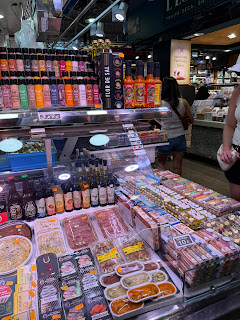We’re at the end of the road and my students are off on their flights back home. A good time to reflect on how far we’ve come. To recap, I led 20 students to Spain in the pursuit of understanding what makes Spain so darn healthy. And I’ve come to a new conclusion this year that seems so obvious. The factors that determine one’s “healthiness”overlap directly with the factors that determine one’s “happiness”.
For years, I’ve followed the research of Dr. Robert Lustig who has written a book on the four C’s of happiness (https://robertlustig.com/4cs/). Coping, cooking, contributing and connecting. Lustig’s research shows these four things result in lasting feelings of happiness as opposed to short-term feelings of pleasure that come from things like sex, drugs, money, and material gain. And there’s physiological evidence to support this work. When I made this connection, a light turned on. Let’s dive in.
Coping. Check! This is a low hanging fruit and something we tend to overly focus on in western cultures. Coping is about self-care with sleeping, physical activity, and stress management as examples of coping. In Spain, both the physical environment and culture make it easier for one to achieve these health behaviors on a regular basis.
Cooking. Check! As we’ve discussed, cooking with friends and families is a regular occurrence in Spain. And the types of foods that are cooked and consumed tend to follow the Mediterranean diet, which is uber-healthy. So I guess double check!
Contributing. Check! Spanish government is more socialist than many countries. Taxes are higher but they go towards supporting resources that are available to all including fancy trains, excellent schools, and public art, which just makes the whole journey so beautiful.The social safety net is very strong, resulting in fewer people falling through the cracks. And there’s just a general sense that giving to others is the right thing to do here. “A rising tide lifts all boats” and all that.
Connecting. Triple Check! Spain is a uniquely social place and is literally built on the idea that humans need to connect often and deeply. Both the physical environment and culture lend themselves to supporting social cohesion and social capital.
Over the past 18 days, my class has experienced all four of these things in abundance. We’ve been extremely physically active, mostly due to the walkable environment. I’m averaging 17,000 steps/day and haven’t so much as sniffed a gym in Spain.We’ve cooked together and shared many meals together. We’ve supported each other. And we’ve connected.
Aayusha, Ava, Alyssa, Claire, Emma, Ellie, Elly, Eli, Ella, Hallie, Maisy, Molly, Kat, Leah, Lexi, Lily, Lexi, Paige, Tiffany, and Sam…20 amazing students who I now consider friends. And that’s what this experience (and life?) is all about, isn’t it? The relationships you build. I can’t wait to see what they do to make this world a healthier and happier place.
I hope it involves little boats. And tapas. And Tinto de Veranos. ;)
If little boats don’t bring your stress down, I don’t know what will!




















































